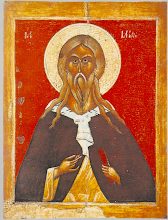History being what it was however, the United States consists primarily of English-speaking Anglo-Celtic peoples, with the exception of the Southwest corner of the United States, which is heavily Spanish-Mexican in language and culture. That being clarified, let's get into what we know to be the prophecies of the coming era, especially as they relate to private revelation and the future of the United States.
Above I briefly mentioned the devotion to Our Lady of America. This was canonically approved in 1963 by the Archbishop of Cincinnati, the late Paul Francis Leibold. Because of some concern over this, the canonical approval was reviewed by canon lawyer Archbishop (now Cardinal) Raymond Burke in 2007. (Cardinal Burke is now Prefect of the Apostolic Signatura at the Vatican.) Cardinal Burke's letter of canonical review can be read here. Cardinal Burke determined that Archbishop Leibold did indeed canonically approve the apparition and message according to the canonical norms of the Catholic Church, and that because of this, Catholics are free to practice what he described as this 'beautiful devotion.' The message of Our Lady of America is long, but essentially simple in nature. Basically, it involves a commitment to the indwelling presence of the Holy Trinity within the hearts of every Christian, and an absolute commitment to chastity and spiritual purity. We are told in this message that this is God's will for the people of the United States, to lead the world in chastity and spiritual purity, and that failure to embrace God's will on this will only result in our national misery. Not many details are given as to what this 'misery' entails. We can assume that much of it is our own doing, since it is obvious that we Americans, as a nation, have not heeded the warning and reformed our lives accordingly. We have seen American society unravel before our very eyes. (Read entire article.)
Christmas Charities of Marie-Antoinette
3 hours ago




















